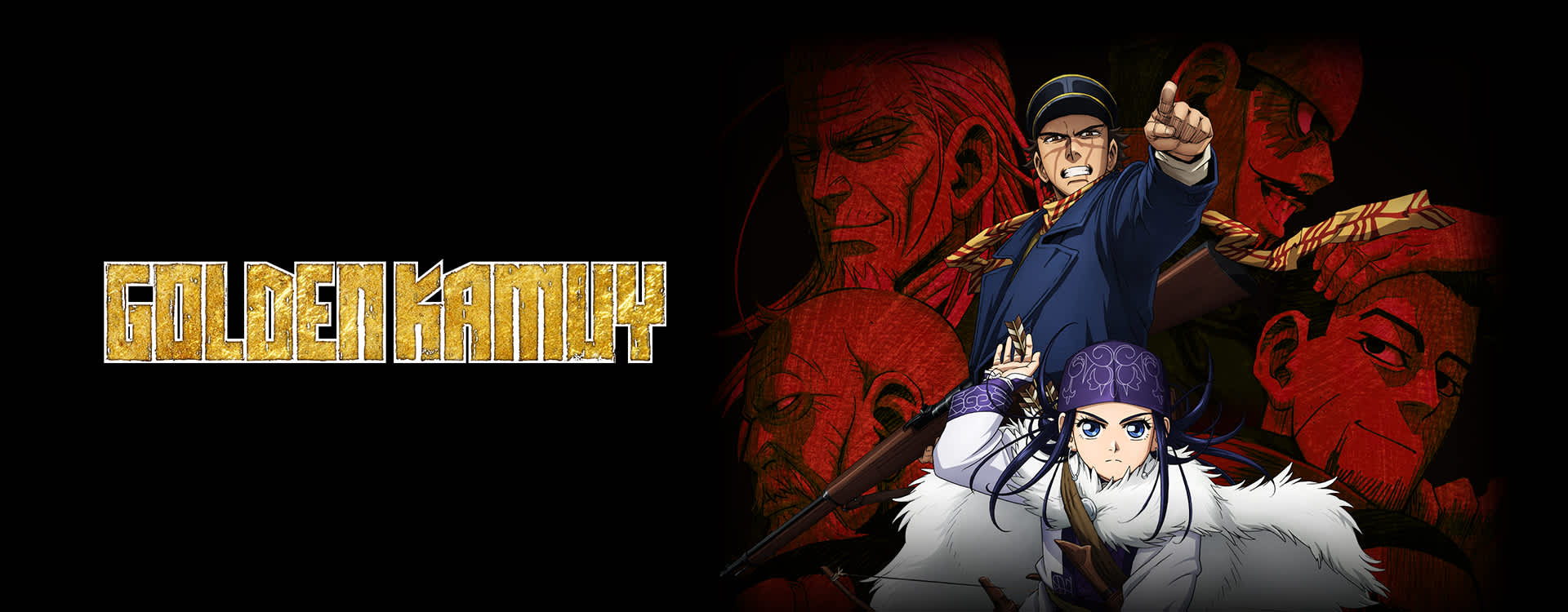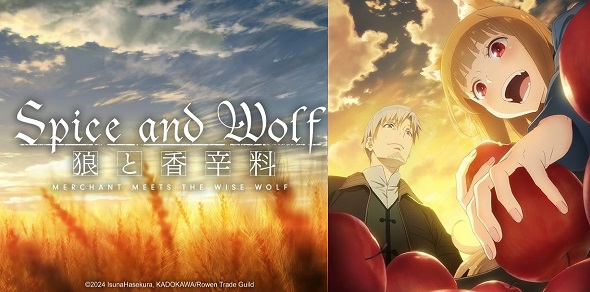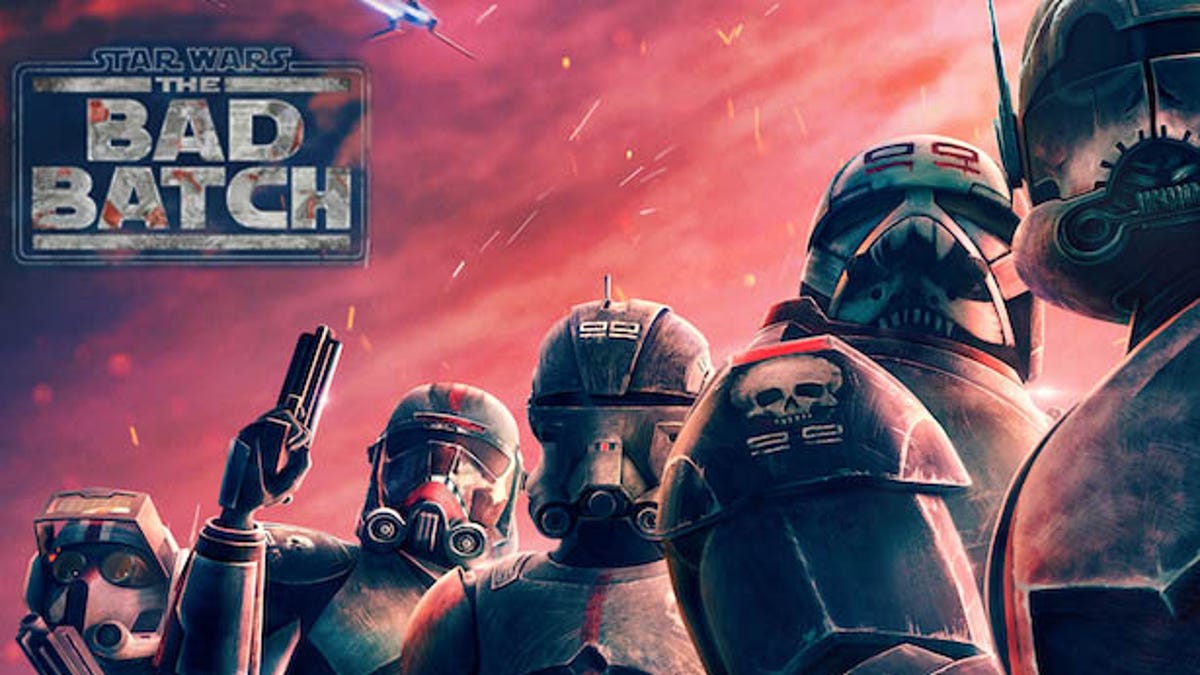English Dub Season Review: Golden Kamuy Season One
A brutal gold hunt.
Our Take:
Golden Kamuy is a savage show. Murder and gore is pretty common, and the main premise revolves around an ugly truth- that people are more than willing to kill for money. The horrors come one after the other; first with the escaped convicts, then with the brutal way the map to the gold was created and is to be assembled, and finally the lengths people will go to get their hands on a crazy amount of money. A high-stakes, high-paced, twisting series.
Sugimoto is the main character, and he’s an interesting one. He starts out neutral, not having a particular stance in the monetary tug-o-war that ensues. Instead of being ingrained in the conflict from the start, he just happens to come across one of the prisoners by chance, and finds out the story by complete accident. While out for his own reasons, eventually he becomes dedicated to the cause in caring for Asirpa. Despite his good intentions, he’s the most honed in combat, as is just as brutal, if not more so than his enemies. Sugimoto refuses to die, no matter how much bodily harm comes his way. If he wasn’t the main character, he’d be a terrifying enemy.
Sugimoto and Asirpa’s partnership is one of the truly good things about the show. Asirpa is young, and on some accounts naive, but she can handle herself. She isn’t entirely prone to violence the way Sugimoto is, but she can expertly take care of herself. Just because she’s a girl doesn’t mean she can’t hold her own. It’s her knowledge of the wilderness combined with Sugimoto’s proficiency in battle that makes them a perfect duo. Outside of the hunt, they clearly care a lot for each other’s wellbeing, and they save each other multiple times. Regardless of the differences between them, they’re unquestionably equals. It’s refreshing to see this type of relationship, and I’d love to see more.
The background is set post Sino-Russian War, and the effects of that have trickled across the country. Sugimoto is a veteran of said war, who made his name in the brutality of combat but has since lost his way. He has a personal dream, but isn’t entirely sure what to do with himself outside of combat. Sugimoto isn’t the only war remnant- there’s also the Seventh Division, who gave their lives for the war but never received any compensation. As terrifying as Tsurumi is, he does seem to just want the best for his men. Even further back is Hijikata, a remnant of the Shinsengumi and the Bakufu, whose role on Japanese history can’t be denied. He’s an old man now, but he wants to continue his dream of establishing the Republic of Ezo. It may be a historical story, but that same history has weight, and the changing times have shaped the happenings, and likely the happenings going forward.
The mangaka, Satoru Noda, has cited in interviews that he makes sure to do his research on Ainu culture so that what he depicts in the story is accurate in real life. While this is a historical manga, the Ainu are still around, and their culture deserves to be presented properly. After all, the details of their culture are still relatively outside of popular knowledge, and for many, like myself, this series was a glimpse into a completely unknown culture. That being said, Ainu practices in anime does not have a very lengthy list of representation- the only vague thing I personally recall is Horohoro from Shaman King, and his Ainu blood was never really a central part of the story at large. What was shown there was more of a fantasy Ainu- as opposed to the detailed, realistic Ainu that Noda tries to depict. There’s a degree of respect in Noda’s work, and I found the tidbits I learned while watching to be fascinating.
Tying into the Ainu cultural forefront is a large focus on food. When this show wasn’t making me tense from the story, it was making me hungry. There is a massive amount of time the series spends on showing how the main team hunts and prepares their food. To those viewers like myself who aren’t that familiar with the details of preparing food from the hunt, I found it very interesting. Not only do we get information on Asirpa’s Ainu beliefs from how she prepares the food and views the animals she cooks, but we also see how it’s done, from the traps set to the cooking itself. It’s also important to note that despite Sugimoto and Asirpa having different views of food, the food Asirpa prepares is never treated as a joke or as something disgusting. There’s a level of respect reserved for her work, and that’s something to be acknowledged, rather than taking the easy ‘different is gross’ approach.
Unfortunately, despite how complex and layered the plot is, the show isn’t perfect. The episodes end up having an overlap, so that a plotline from one episode ends up bleeding into the next. While this could’ve been done to keep suspense up, it ends up being more awkward than anything else. The animation quality as a whole is just okay- people have mentioned the CGI bears as being particularly awkward, but that aside, the animation isn’t particularly standoutish. It’s functional, but it’s nothing worth noting. The potential is there, but the presentation rounds it to something that’s just alright.
Despite these inconsistencies, this is one hell of a story. I had fun with it! Season 2 has already been greenlit for the fall season, so here’s to waiting until we see how Sugimoto and Asirpa’s adventures continue.
Score
























Hi Ashley, thank you so much for reading and we love the feedback. Note that on that day we had 14th posts go up and only ten posts show on the front page, so it's possible the preview had already been archived by the time you got to it. One recommendation would be to add our RSS feed to your favorite news aggregator service like Feedly, this way you get all of the latest posts!